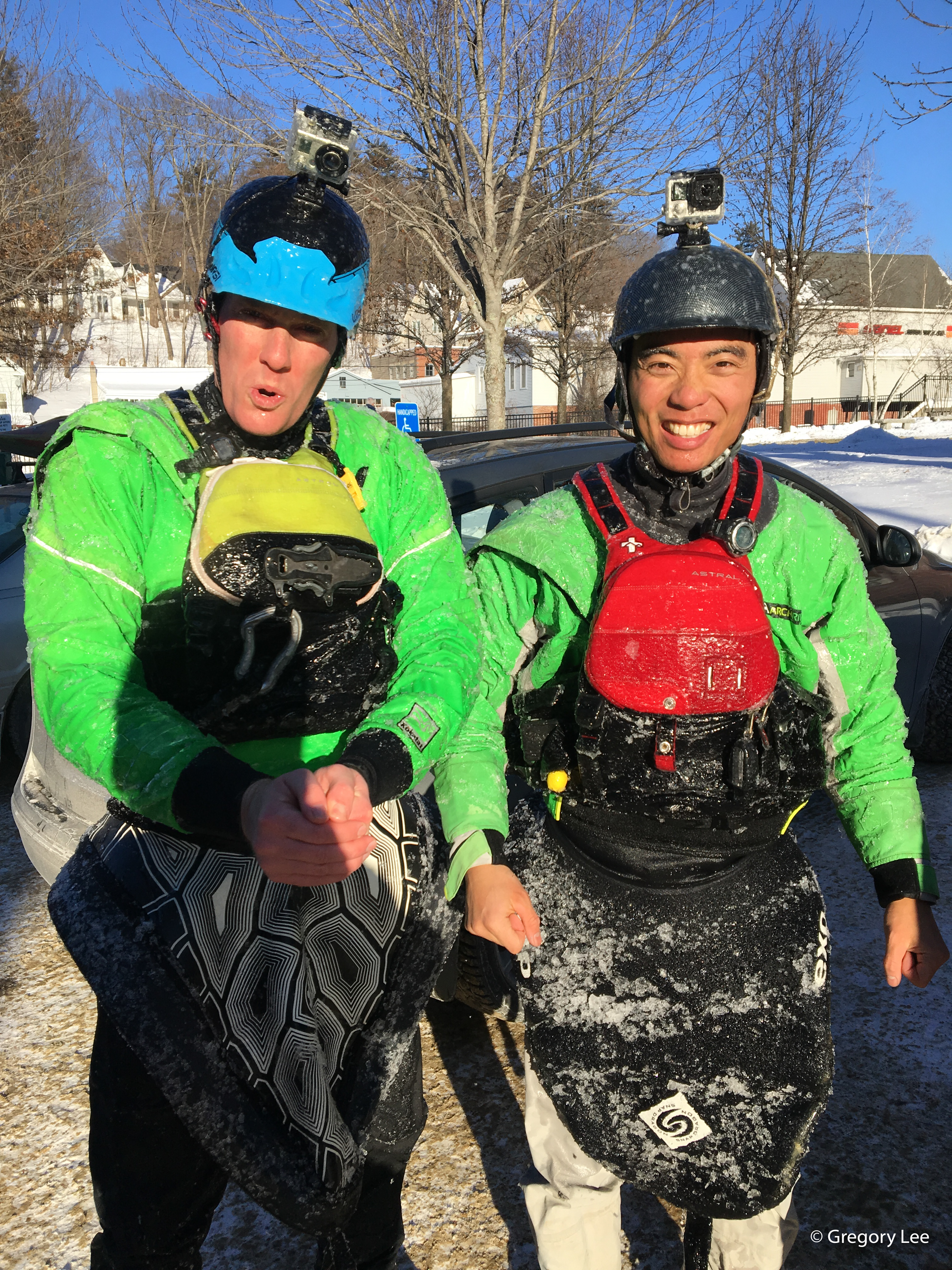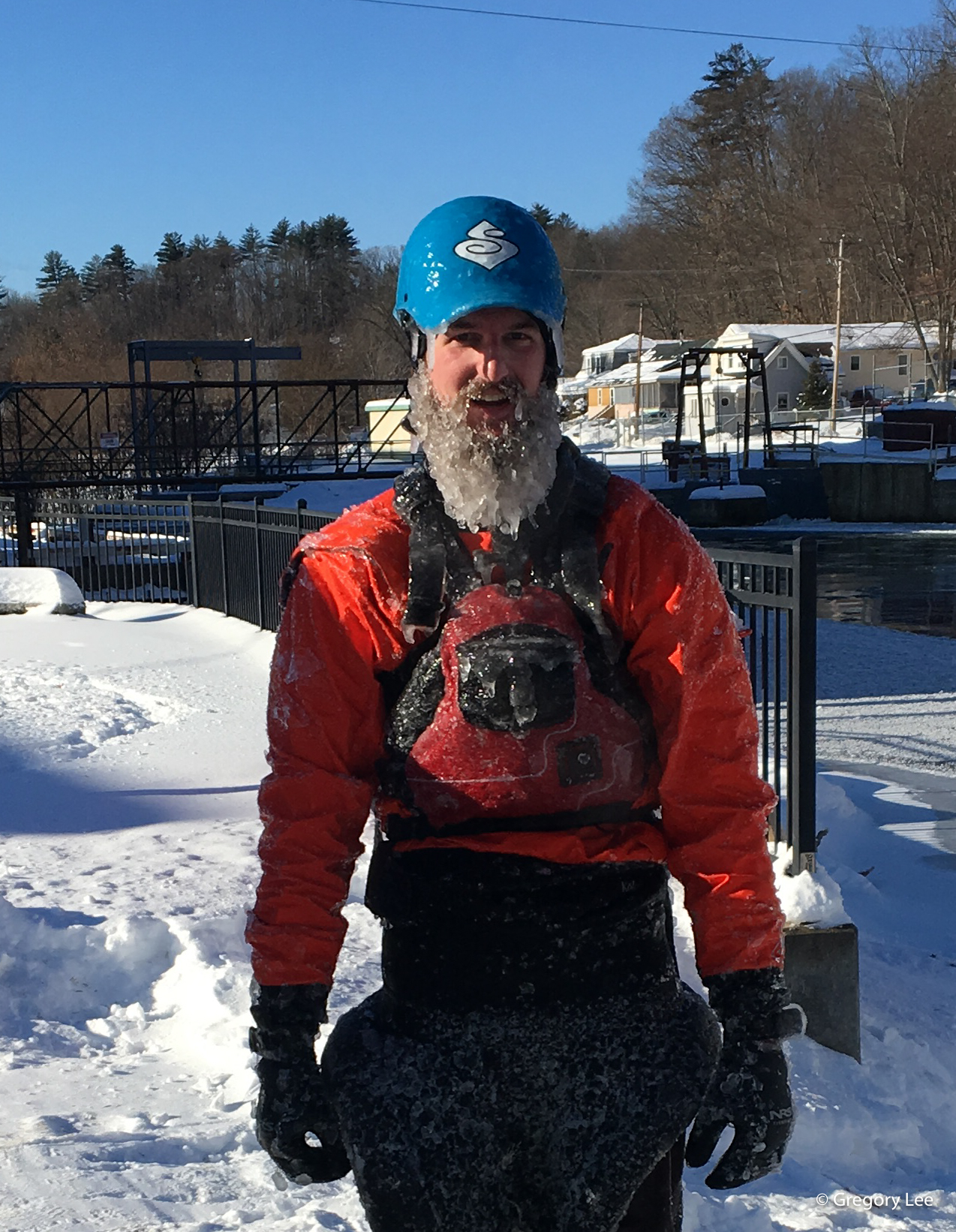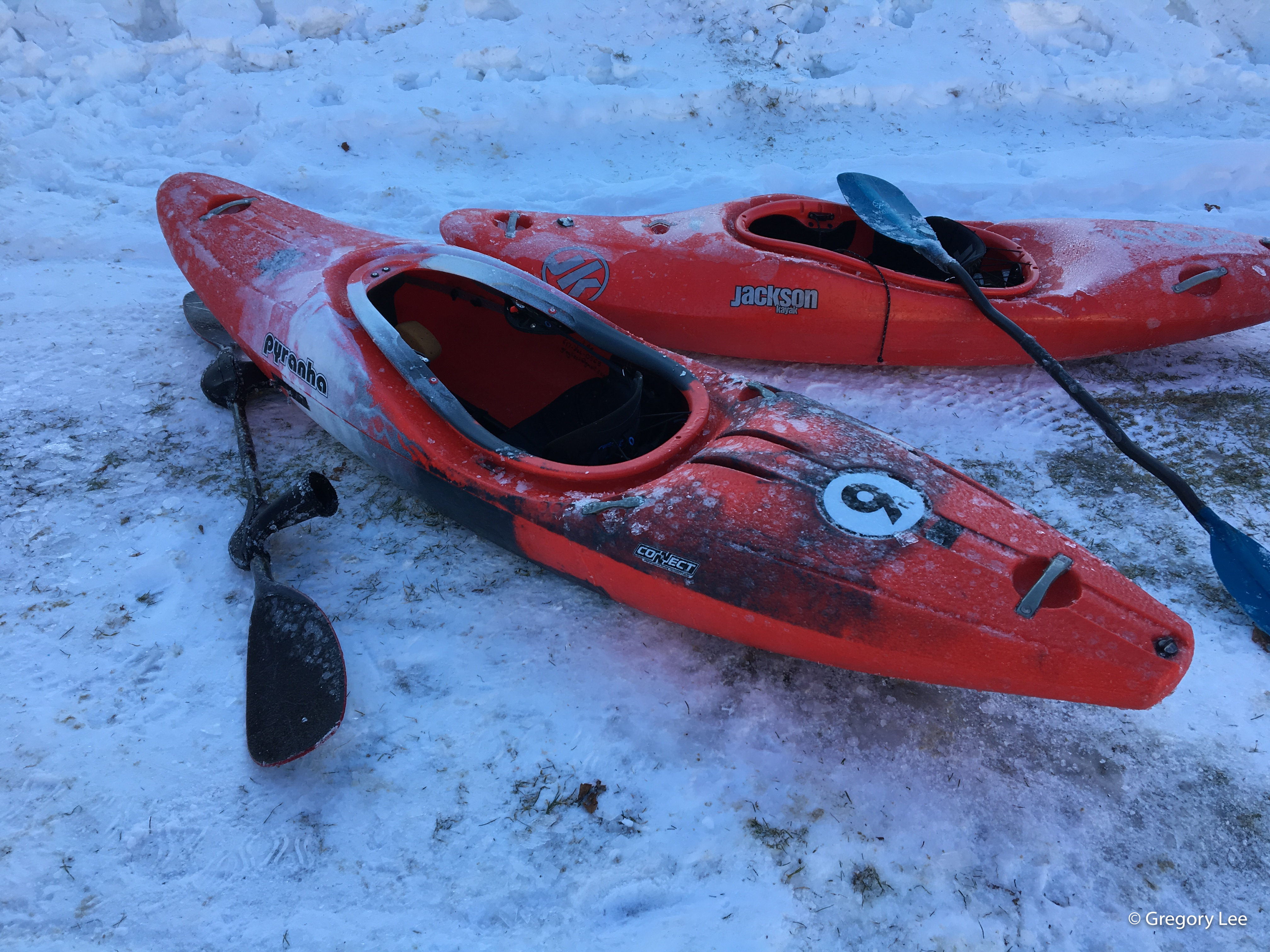- Published on
The Coldest Day
*DRAFT*
- Authors
New Year's Day 2018
Overnight temperature: -20 °F
Air temperature: 6 °F
Water temperature: 21.3 °F
 |
|---|
| Ross and I, at takeout, encased in ice. We're not warm. |
This is the story of my coldest ever day on the river, with Ross Allen and Quinn Connell. Ross made a video of the day, although his lens was iced over for much of the run. I apologize for the low photo quality, my hands were too cold to do anything more than shoot fast.
New Year’s Paddle
Every New Year’s Day, the town of Franklin, NH hosts a river event for the most hardy of New Englanders on the Winnepesauke river. No matter the temperature, they release water from the dam upstream, so that perfectly sane people like myself can paddle it. Some years, it’s a balmy 40 °F. Other years, it’s a bit colder.
2018 was cold. Really cold. It was deep in the negatives the night before. When I woke up, it was still -15 °F and the low was probably around -20 °F or -25 °F. By the time people started arriving at the river, it had warmed up to 0 °F. I got there in the “heat” of the afternoon, and it was 6 °F at put in. What followed was a unique experience in the weird and wonderful world of winter boating.
 |
|---|
| My friend Stevie put on a little earlier than us, and flipped over. The beard is the result. |
Supercooled
21.3 °F. I’m sure that you saw this water temperature at the top, and thought, “that’s impossible!” Well, I did too. But, I brought an IR thermometer to the river (as one does), and 21.3 °F was the measured temperature of the water in the main flow at takeout. 1
The instrument wasn’t lying. It turns out that you can have flowing, supercooled water, and 21.3 °F is a perfectly reasonable temperature for a river. Rivers can actually run much colder. The consequences of this temperature are really interesting: any time the water stopped, it froze.
Ice Everywhere
The water froze to everything. Boats, people, rocks, paddles, beards, you name it. Everything was glazed in about a quarter inch of clear, hard ice at the end of the run. Luckily Quinn gave me some great advice to not tighten my PFD so I could remove it at the end of the run. Ross didn’t get the memo, and he spent an hour in front of a fire thawing out so he could get his gear off.
The river was slowly freezing too, but not in the way you might expect. Anytime there is flow in a river, there is a layer at the bottom in contact with the river bed, where the velocity is 0. Thus, the river actually started freezing from the bottom. You could see the ice growing up from the bottom of the river, in these weird ice formations. The ice-encased underwater rocks were especially cool. Unfortunately, I didn’t get any pictures, but maybe next time.
Getting splashed was an interesting experience. Sometimes, the water would freeze in the air, and you’d get pelted with ice. Sometimes, the water would hit you, and then freeze. Sometimes the water wouldn't freeze, but it would freeze you.
At one point, I got splashed in the face. “Man,” I thought, “that’s cold.” I reflexively closed my eyes, as I always do. To my dismay, I couldn’t open them again: my eyelids had frozen shut! Luckily, a couple of wipes and blink attempts later, I got them open. But damn, that was kind of scary.
 |
|---|
| Our boats, all iced up. |
The paddling
The paddling itself was really fun. It turns out that ice encased rocks make really nice boofs. The slide you get is incredible. Also, since my paddle had a thin layer of ice on it at all times, the water felt silky smooth. I was glad, though, that the Winni is class III, and easy to bail from. I would not have wanted to do a harder or more committing run.
I was warm enough while on the water, although my hands and face were a little unstable. It’s amazing what modern drysuits and layers can handle. Next time, rubber gloves under the pogies and a facemask of some sort (that won't suffocate me if it ices) might be in order. The coldest part of the whole experience was actually loading boats and taking off gear at the end. Turns out, there's nowhere to warm your hands when you're wearing a drysuit. Also, iced gear is REALLY difficult to remove. The zippers on the drysuits were too slippery to grip, so we had to melt them first to get changed.
Next time
Will there be a next time? I’m not sure. As I said, I’d be reticent to do something more committing or more difficult. Also, this river has a special set of circumstances. They release water from the dam in a pulse the day before, which blows all the ice out of the channel, and the river stays ice free for a couple of days. Generally, when the weather is cold, ice bridges form over the slow spots of the river. Ice bridges are EXTREMELY dangerous, as you can get swept under them, never to be seen again. Also, iced banks are difficult to get out on, so it can be hard to escape the river in an emergency. I do not put on to any river that I think might have a chance of ice dams, so that limits my future super cold days.
What' the coldest day?
So, I’m interested to know, what’s the coldest day that’s ever been paddled? Some people put on earlier in the day, when the temperature was 0 °F, which is the coldest I’ve heard of. I think that’s the coldest New Year’s Paddle in 40 years. Does anyone know of a colder put on temperature?
Footnotes
IR thermometers are very accurate and so this temperature should represent the true temperature. If you really want to nerd about about emissivities and such, water has a generally high emissivity, so it should work well with an IR thermometer. ↩